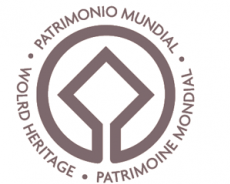
Email: emanuelealbertocirello.98@gmail.com
Total Article : 76
About Me:I am a Year 13 student which aspires to be an architect. I am interested in anything I don't yet know, and I mostly write about art, politics , Italian culture and inspirational people, although I will try to write for as many categories possible, just to test myself and get to know more things.

On the 17th June 2016, the UNESCO Commission has included eleven residential buildings and six collective buildings by Le Corbusier in the World Heritage list. The stop put in 2009 in Seville and in 2011 in Paris to similar proposals, which aimed insert the designs by Le Corbusier in World Heritage list, have been forgotten; this means that the works by the French architect are never going to be overlooked and can be seen as a “series” rather than a “set” of buildings. This will show that his works throughout his career were interlinked in both their aesthetic and material aspects, their scale, their use and their relationship with the contexts, historical and environmental, where they were built.
An important contribution to the inclusion of many buildings made in the 20th century in the World Heritage list was due to the “do.co.mo.mo” organisation and its birth in 1988, and furthermore its inventory made in 1992. The innovation was not just the creation of a documented historic memory, but also the ways in which they have allowed the documentation and conservation of many buildings. Their “exceptional” consideration is not given to a singular building, but to a series of buildings characterised by common thematic criteria. Hence the instance, over many years, to make of Le Corbusier’s buildings a world’s patrimony.
If the “Cabanon” of Roquebrune-Cap-Martin (1951) and the “Unité d’habitation” in Marseille (1945), they both have the same residential theme, but they are however immensely different from each other. This is seen with many other buildings made by the French architect, which may have the same functional theme but a deeply diversified use of design and materials.

In the seventeen selected buildings, there is the Justice Court in Chandigarh, a city that owns most of its development to Le Corbusier and that strengthens the merit of the architect to have his work inserted in the Wolrd Heritage given its involvement not only in European projects, but also in many other international contexts. Regardless of where he has built and what he has design, Le Corbusier’s work is a “strong and intense emotion […] almost invincible” as he himself worte in 1956. An emotion he produced from the results obtained through a patient research of the needs and wants of mankind. Results that have finally been recognised as World Heritage for half a year.
The works in the following list are only organic and immovable masses of material, but they are carriers of his thoughts, thoughts that “Are the only transmittable things […] that can, cannot, become a victory” as he said in 1965.
The list of buildings inserted by UNESCO in the World Heritage
Villa Le Lac in Corseaux, Switzerland (1923)
Maisons La Roche et Jeanneret in Paris (1923-1925)
Cité Frugès in Pessac, France (1924)
Maison Guiette in Antwerp, Belgium (1926)
Experimental housing Weissenhof-Siedlung in Stuttgart, Germany (1927)
Villa Savoye in Poissy, France (1928)
Immeuble Clarté in Geneva, Switzerland (1930)
Immeuble Molitor in rue Nungesser et Coli 24 in Paris (1931-1934)
Unité d’habitation in Marseille, France (1945)
Manifattura Duval in Saint-Dié, France (1946)
Casa Curutchet in La Plata, Argentina (1949)
Notre Dame Chapel du Haut in Ronchamp, France (1950-1955)
Cabanon in Cap Martin, France (1951)
Capital Complex in Chandigarh, India (1952)
Convento in Sainte-Marie de la Tourette a Eveux-sur-l’Arbresle, France (1953)
Maison de la Culture in Firminy, Francia (1953)
National Museum of Western Arts in Tokyo (1955)
Image credits: http://www.omantourism.gov.om/wps/portal/mot/tourism/oman/home/experiences/culture/heritage/!ut/p/a1/04_Sj9CPykssy0xPLMnMz0vMAfGjzOItvc1dg40MzAz8fZzMDTyDQz0Mg92djC3cDfWDU_P0C7IdFQG5jE_t/
https://uk.pinterest.com/pin/125749014571319403/

0 Comment:
Be the first one to comment on this article.